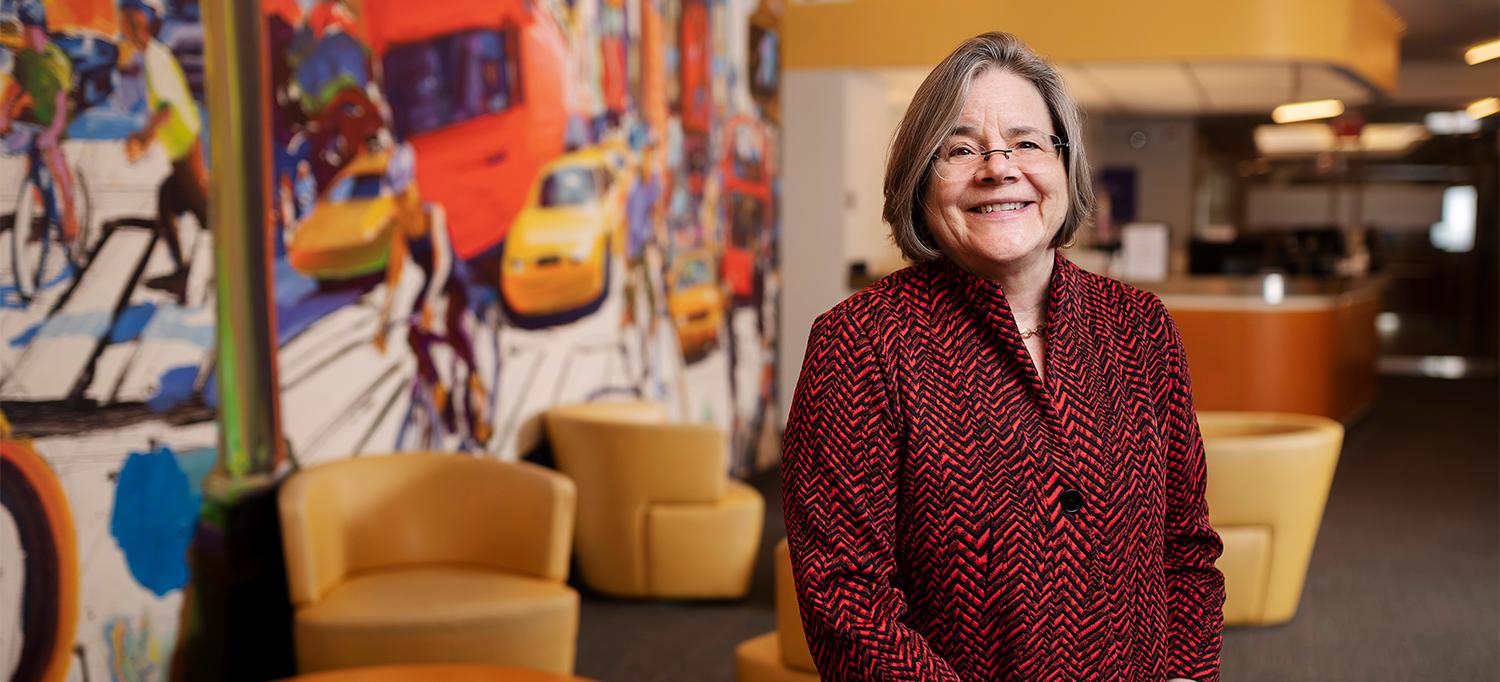As Depression & Suicidal Behavior Strike Young People at an Alarming Rate, Child Psychiatrist Jennifer Havens, MD, Shares Her Insights & Perspectives

Dr. Jennifer Havens, chair of the Department of Child and Adolescent Psychiatry, is an ardent advocate for improving child mental health services.
Photo: Karsten Moran
The Centers for Disease Control and Prevention reports that between 2009 and 2019, young people experienced a 10 percent increase in depression and a 5 percent rise in suicidal behavior. Those numbers prompted leading pediatric organizations to declare a national mental health crisis. Last year, Jennifer Havens, MD, was appointed chair of NYU Grossman School of Medicine’s Department of Child and Adolescent Psychiatry. A leader in the effort to improve child mental health services, she offers her insights and perspectives on this troubling trend.
Which factors account for the alarming rise in mental health issues among young people?
This trend actually began in the 1990s. The data shows that anxiety, depression, suicidal behavior, and eating disorders were all increasing well before the pandemic.
“For most kids, the world is much more stressful than it used to be.”
—Jennifer Havens, MD, Chair of the Department of Child and Adolescent Psychiatry
But prolonged isolation exacerbated these problems, increasing the acuity of the need for professional care and creating a demand that we cannot meet. For most kids, the world is much more stressful than it used to be. They’re exposed to everything, and less protected from harmful influences. Also, puberty begins earlier now, and with it comes stress. Kids are struggling with mental health challenges at younger and younger ages.
What role does social media play in this crisis?
It’s a two-sided coin. Social media makes cyberbullying very easy, and that’s a precipitant for a lot of mental health problems in young people. In 2004, I opened the world’s first psychiatric emergency department for children at another hospital in New York. A lot of kids came in feeling suicidal after being bullied. On the flip side, social media can have a lot of positive elements. For example, gay youth from cultures that are not supportive now have access to a support system. I think the jury’s out on whether social media is actually damaging to children.
Are kids faring better now that the isolation of the pandemic has receded?
We’ll know in the months ahead. COVID forced kids into an entirely virtual world. It confirmed what we already know, which is that too much screen time and not enough interaction are unhealthy for kids. We’ve seen how social isolation can exacerbate anxiety and depression in young people. It’s fabulous that children are back in school.
Talk about your biggest advocacy efforts.
I’m involved with Healthy Minds, Healthy Kids, a group of statewide advocates, providers, and social service agencies, as well as planning efforts for New York City’s child and family mental healthcare system. We’ve been working to figure out which levers we need to pull to address underlying issues. Many of these issues are financial. Under-reimbursement for mental health services affects both access and quality, as well as the development of a sustainable workforce.
Which treatment strategies are most effective?
About 80 percent of people respond well to mental health treatment. We’ve learned so much about what causes mental illness, how to treat it, and how to work with families. We have evidence-based psychotherapies for anxiety, depression, and trauma that really work. But the reimbursement system and our structural mental health system haven’t caught up. Several states, including New York, have invested in training and consultation for pediatricians to treat children. There are only about 8,000 child psychiatrists in America, so these programs are critical. With the dramatic increase in youth suicidality, we know that children are dying because their families can’t find the right mental health services.
Has telemedicine expanded access for young people with behavioral health issues?
Telepsychiatry is a big advance, but it has limitations. It doesn’t increase the number of providers. It works for many people, but it doesn’t work for very young kids, and it’s just not appropriate for others. And it’s also not ideal in an emergency situation.
Do you expect the debut of 988, the National Suicide Prevention Lifeline, to reduce the number of teen suicides?
I hope so, but I worry about what we do once the child has calmed down, and they need somewhere to go for care. Having immediate access to a professional in a moment of crisis is crucial. And remember, the most worrisome group is young people who don’t tell anybody that they want to commit suicide. They’re the ones really intent on doing it.
What makes you hopeful?
Today’s kids are amazing. They’re very resilient, and they’re going to bounce back from these setbacks. We continue to make progress in both the prevention and treatment of mental health issues. We are working as hard as we can to make accessible, affordable mental healthcare available to all children and their families.

